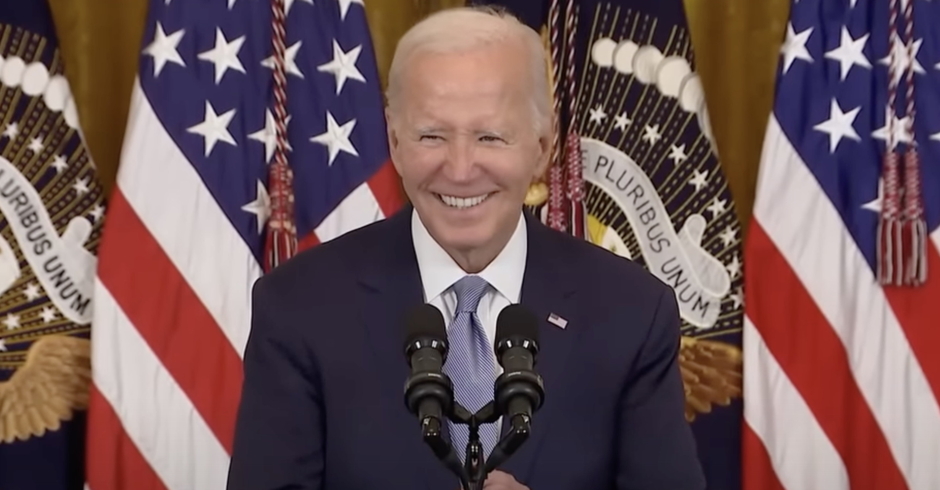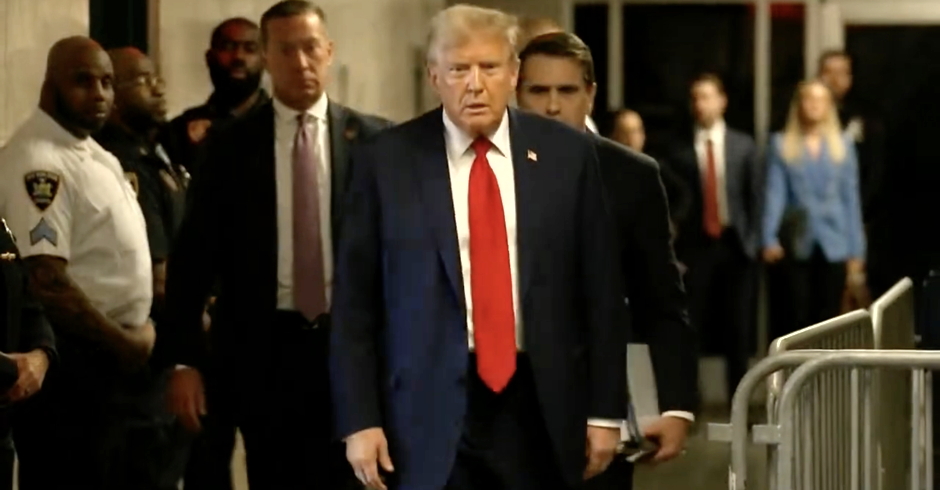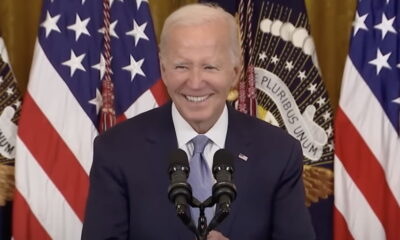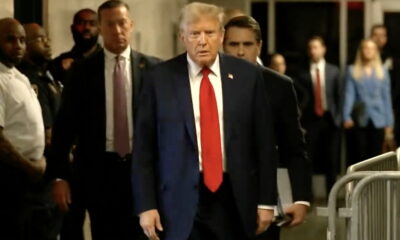Watch Obama’s Historic “Make-Or-Break” Osawatomie Speech – Full Text And Video Part II
This is Part II. Please click to continue to Part III.
Now, just as there was in Teddy Roosevelt’s time, there is a certain crowd in Washington who, for the last few decades, have said, let’s respond to this economic challenge with the same old tune. “The market will take care of everything,†they tell us. If we just cut more regulations and cut more taxes — especially for the wealthy — our economy will grow stronger. Sure, they say, there will be winners and losers. But if the winners do really well, then jobs and prosperity will eventually trickle down to everybody else. And, they argue, even if prosperity doesn’t trickle down, well, that’s the price of liberty.
Now, it’s a simple theory. And we have to admit, it’s one that speaks to our rugged individualism and our healthy skepticism of too much government. That’s in America’s DNA. And that theory fits well on a bumper sticker. (Laughter.) But here’s the problem: It doesn’t work. It has never worked. (Applause.) It didn’t work when it was tried in the decade before the Great Depression. It’s not what led to the incredible postwar booms of the ‘50s and ‘60s. And it didn’t work when we tried it during the last decade. (Applause.) I mean, understand, it’s not as if we haven’t tried this theory.
Remember in those years, in 2001 and 2003, Congress passed two of the most expensive tax cuts for the wealthy in history. And what did it get us? The slowest job growth in half a century. Massive deficits that have made it much harder to pay for the investments that built this country and provided the basic security that helped millions of Americans reach and stay in the middle class — things like education and infrastructure, science and technology, Medicare and Social Security.
Remember that in those same years, thanks to some of the same folks who are now running Congress, we had weak regulation, we had little oversight, and what did it get us? Insurance companies that jacked up people’s premiums with impunity and denied care to patients who were sick, mortgage lenders that tricked families into buying homes they couldn’t afford, a financial sector where irresponsibility and lack of basic oversight nearly destroyed our entire economy.
We simply cannot return to this brand of “you’re on your own†economics if we’re serious about rebuilding the middle class in this country. (Applause.) We know that it doesn’t result in a strong economy. It results in an economy that invests too little in its people and in its future. We know it doesn’t result in a prosperity that trickles down. It results in a prosperity that’s enjoyed by fewer and fewer of our citizens.
Look at the statistics. In the last few decades, the average income of the top 1 percent has gone up by more than 250 percent to $1.2 million per year. I’m not talking about millionaires, people who have a million dollars. I’m saying people who make a million dollars every single year. For the top one hundredth of 1 percent, the average income is now $27 million per year. The typical CEO who used to earn about 30 times more than his or her worker now earns 110 times more. And yet, over the last decade the incomes of most Americans have actually fallen by about 6 percent.
Now, this kind of inequality — a level that we haven’t seen since the Great Depression — hurts us all. When middle-class families can no longer afford to buy the goods and services that businesses are selling, when people are slipping out of the middle class, it drags down the entire economy from top to bottom. America was built on the idea of broad-based prosperity, of strong consumers all across the country. That’s why a CEO like Henry Ford made it his mission to pay his workers enough so that they could buy the cars he made. It’s also why a recent study showed that countries with less inequality tend to have stronger and steadier economic growth over the long run.
Inequality also distorts our democracy. It gives an outsized voice to the few who can afford high-priced lobbyists and unlimited campaign contributions, and it runs the risk of selling out our democracy to the highest bidder. (Applause.) It leaves everyone else rightly suspicious that the system in Washington is rigged against them, that our elected representatives aren’t looking out for the interests of most Americans.
But there’s an even more fundamental issue at stake. This kind of gaping inequality gives lie to the promise that’s at the very heart of America: that this is a place where you can make it if you try. We tell people — we tell our kids — that in this country, even if you’re born with nothing, work hard and you can get into the middle class. We tell them that your children will have a chance to do even better than you do. That’s why immigrants from around the world historically have flocked to our shores.
And yet, over the last few decades, the rungs on the ladder of opportunity have grown farther and farther apart, and the middle class has shrunk. You know, a few years after World War II, a child who was born into poverty had a slightly better than 50-50 chance of becoming middle class as an adult. By 1980, that chance had fallen to around 40 percent. And if the trend of rising inequality over the last few decades continues, it’s estimated that a child born today will only have a one-in-three chance of making it to the middle class — 33 percent.
It’s heartbreaking enough that there are millions of working families in this country who are now forced to take their children to food banks for a decent meal. But the idea that those children might not have a chance to climb out of that situation and back into the middle class, no matter how hard they work? That’s inexcusable. It is wrong. (Applause.) It flies in the face of everything that we stand for. (Applause.)
Now, fortunately, that’s not a future that we have to accept, because there’s another view about how we build a strong middle class in this country — a view that’s truer to our history, a vision that’s been embraced in the past by people of both parties for more than 200 years.
It’s not a view that we should somehow turn back technology or put up walls around America. It’s not a view that says we should punish profit or success or pretend that government knows how to fix all of society’s problems. It is a view that says in America we are greater together — when everyone engages in fair play and everybody gets a fair shot and everybody does their fair share. (Applause.)
So what does that mean for restoring middle-class security in today’s economy? Well, it starts by making sure that everyone in America gets a fair shot at success. The truth is we’ll never be able to compete with other countries when it comes to who’s best at letting their businesses pay the lowest wages, who’s best at busting unions, who’s best at letting companies pollute as much as they want. That’s a race to the bottom that we can’t win, and we shouldn’t want to win that race. (Applause.) Those countries don’t have a strong middle class. They don’t have our standard of living.
The race we want to win, the race we can win is a race to the top — the race for good jobs that pay well and offer middle-class security. Businesses will create those jobs in countries with the highest-skilled, highest-educated workers, the most advanced transportation and communication, the strongest commitment to research and technology.
The world is shifting to an innovation economy and nobody does innovation better than America. Nobody does it better. (Applause.) No one has better colleges. Nobody has better universities. Nobody has a greater diversity of talent and ingenuity. No one’s workers or entrepreneurs are more driven or more daring. The things that have always been our strengths match up perfectly with the demands of the moment.
But we need to meet the moment. We’ve got to up our game. We need to remember that we can only do that together. It starts by making education a national mission — a national mission. (Applause.) Government and businesses, parents and citizens. In this economy, a higher education is the surest route to the middle class. The unemployment rate for Americans with a college degree or more is about half the national average. And their incomes are twice as high as those who don’t have a high school diploma. Which means we shouldn’t be laying off good teachers right now — we should be hiring them. (Applause.) We shouldn’t be expecting less of our schools –- we should be demanding more. (Applause.) We shouldn’t be making it harder to afford college — we should be a country where everyone has a chance to go and doesn’t rack up $100,000 of debt just because they went. (Applause.)
In today’s innovation economy, we also need a world-class commitment to science and research, the next generation of high-tech manufacturing. Our factories and our workers shouldn’t be idle. We should be giving people the chance to get new skills and training at community colleges so they can learn how to make wind turbines and semiconductors and high-powered batteries. And by the way, if we don’t have an economy that’s built on bubbles and financial speculation, our best and brightest won’t all gravitate towards careers in banking and finance. (Applause.) Because if we want an economy that’s built to last, we need more of those young people in science and engineering. (Applause.) This country should not be known for bad debt and phony profits. We should be known for creating and selling products all around the world that are stamped with three proud words: Made in America. (Applause.)
Today, manufacturers and other companies are setting up shop in the places with the best infrastructure to ship their products, move their workers, communicate with the rest of the world. And that’s why the over 1 million construction workers who lost their jobs when the housing market collapsed, they shouldn’t be sitting at home with nothing to do. They should be rebuilding our roads and our bridges, laying down faster railroads and broadband, modernizing our schools — (applause) — all the things other countries are already doing to attract good jobs and businesses to their shores.
Yes, business, and not government, will always be the primary generator of good jobs with incomes that lift people into the middle class and keep them there. But as a nation, we’ve always come together, through our government, to help create the conditions where both workers and businesses can succeed. (Applause.) And historically, that hasn’t been a partisan idea. Franklin Roosevelt worked with Democrats and Republicans to give veterans of World War II — including my grandfather, Stanley Dunham — the chance to go to college on the G.I. Bill. It was a Republican President, Dwight Eisenhower, a proud son of Kansas — (applause) — who started the Interstate Highway System, and doubled down on science and research to stay ahead of the Soviets.
Of course, those productive investments cost money. They’re not free. And so we’ve also paid for these investments by asking everybody to do their fair share. Look, if we had unlimited resources, no one would ever have to pay any taxes and we would never have to cut any spending. But we don’t have unlimited resources. And so we have to set priorities. If we want a strong middle class, then our tax code must reflect our values. We have to make choices.
Today that choice is very clear. To reduce our deficit, I’ve already signed nearly $1 trillion of spending cuts into law and I’ve proposed trillions more, including reforms that would lower the cost of Medicare and Medicaid. (Applause.)
Â
 This is Part II. Please click to continue to Part III.

Enjoy this piece?
… then let us make a small request. The New Civil Rights Movement depends on readers like you to meet our ongoing expenses and continue producing quality progressive journalism. Three Silicon Valley giants consume 70 percent of all online advertising dollars, so we need your help to continue doing what we do.
NCRM is independent. You won’t find mainstream media bias here. From unflinching coverage of religious extremism, to spotlighting efforts to roll back our rights, NCRM continues to speak truth to power. America needs independent voices like NCRM to be sure no one is forgotten.
Every reader contribution, whatever the amount, makes a tremendous difference. Help ensure NCRM remains independent long into the future. Support progressive journalism with a one-time contribution to NCRM, or click here to become a subscriber. Thank you. Click here to donate by check.
 |










